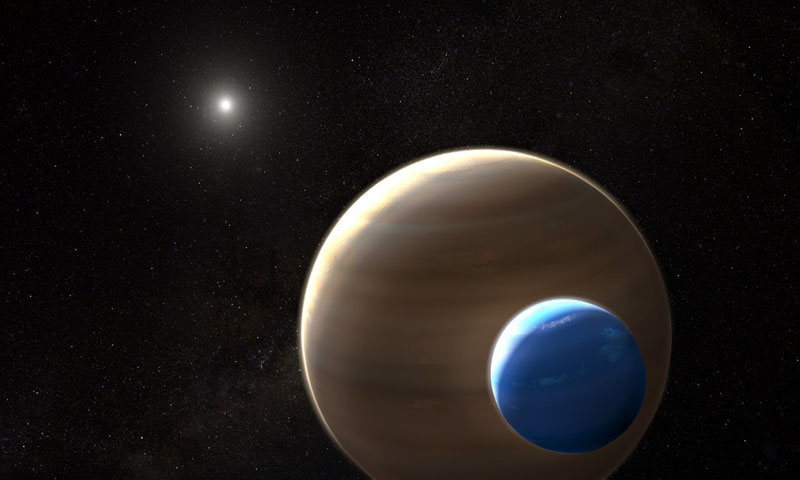It’s not often I get to bring up an old, terrible meme in the title of an article, but I felt this one was right for this topic, which is a pretty awesome one – back on October 5th it was annoucned that a moon orbiting a planet outside of our solar system – an Exomoon of an Exoplanet – had been discovered!
This discovery actually coming from data gathered by the venerable Hubble Space Telescope. In this case, to sum up the articles discussing the discovery it was found that the normal light curve of a planet traveling in front of its host star – the most “direct” way to detect a panet orbiting another star since it will dim the light from that star ever so slightly – had a second, smaller dip in brightness, implying a moon orbiting the planet in question.
What’s crazy is how massive the moon is – it’s a gas giant on par with some of the larger planets in our own solar system, with the host planet, Kepler 1625b, being more massive than any of the worlds in our own solar system.
This alone doubles the awesomeness of the discovery, but it does make sense that a gas giant moon would be the first one we would discover – a smaller moon around a smaller planet certainly wouldn’t be as visible so is less likely to be discovered on a whole, let alone as the first candidate. It’s safe to presume gas moons might be common enough on their own – at least, by comparison to what we have in our own solar system, which is no gas moons of any kind.
Rather than me go on re-stating what others have, I’ll leave you with a good article on the subject. I just had to write about this becuase it’s pretty awesome. A gas giant orbiting another even more massive gas giant? The universe is amazing at times. Well, that’s really an understatement but I think you know what I mean.
https://en.wikipedia.org/wiki/Exomoon
https://en.wikipedia.org/wiki/Exoplanet

This artist’s impression depicts the exomoon candidate Kepler-1625b-i, the planet it is orbiting and the star in the centre of the star system. Kepler-1625b-i is the first exomoon candidate and, if confirmed, the first moon to be found outside the Solar System. Like many exoplanets, Kepler-1625b-i was discovered using the transit method. Exomoons are difficult to find because they are smaller than their companion planets, so their transit signal is weak, and their position in the system changes with each transit because of their orbit. This requires extensive modelling and data analysis.
